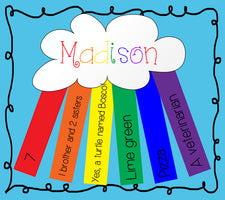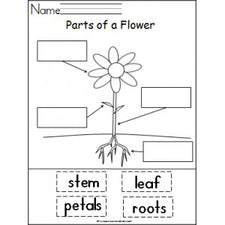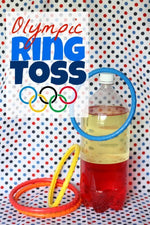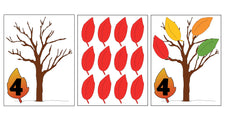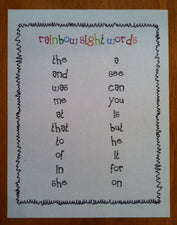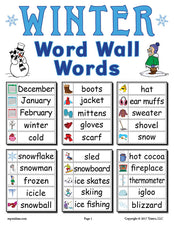American Indians Heritage Series: The Inuits

It’s hard to imagine what America looked like before roads and skyscrapers, let alone before easterners "discovered' this new and untamed land. Do your students know that, even before Christopher Columbus arrived in the “new world”, there were groups of natives (original inhabitants of a place) spread out over the entire country? Known today by their rightful name, Native Americans, these groups or tribes of people were called Indians by Columbus who thought he’d reached a country called India. In honor of “American Indian Heritage Month", this series of lessons will help your students get to know the various cultures and tribes of the original Americans.
Unit Introduction
- Grab a globe and invite your students to gather around. Commissioned by the King and Queen of Spain in 1492, Columbus was enlisted to find a westward trading route to Asia. [Point out Spain and Asia on the globe.] At this point, easterners had no idea that the Americas even existed. Because of this very fact, when Columbus reached land nearly two and a half months after setting sail, he thought he’d landed in India. [Point out the “new world” and India on the globe. Discuss how far off the mark Columbus was.] Thus, the native peoples Columbus and his crew encountered were given the (very wrong) name, Indians.
- Show students a map of the Native American Cultures/Groups inhabiting the Americas. Discuss how every part of the Americas is highlighted – showing that native communities were spread throughout both continents. Remind them that, while Native Americans have been stereotyped, not every native tribe was the same. Because of regional weather conditions and available resources, housing, dress, food, customs, and even tools/weapons differed for each tribe. Let students know that they will be exploring the cultural differences of several Native American Tribes. [NOTE: Try to present the information for each cultural group in a similar format to make it easier for students to make comparisons and connections.]
The Inuits (Eskimos)
Lesson Objective
Learn about the Inuit way of life: where they live, the climate in their region, housing, how they dress (both regularly and ceremonially), what they eat, their customs, transportation, and everyday tools/weapons. Begin by showing students where the Inuit tribe is located on a Native American Cultures/Groups Map and discuss the following information:
Pertinent Data
- Habitat: Arctic (North)
- Housing: Igloos or tents/houses made from animal skins, wood, sod, or mud
- Clothing: Sealskin parkas in the summer, caribou skin parkas in the winter, and boots made of walrus hide
- Food: Expert fisherman and hunters - the Inuits survived on seal, walrus, caribou and other animals
- Tools/Transportation: Harpoons, kayaks, umiaks (open boats made of wood and skin), and dog sleds
Lesson Activities
Literature & Writing
Children's Books. Debbie Haren, Hotchalk ® Lesson Plans Page contributor, recommends Barbara M. Joosse’s Mama Do You Love Me? The book presents many opportunities to discuss the wildlife found in the Inuit’s region (i.e. musk ox, moose, caribou, whales, ermine, etc.) and offers some fun cultural vocabulary words (i.e. mukluks = boots). You might also wish to include Robert N. Munsch’s A Promise is A Promise and Lydia Dabcovich's The Polar Bear Son: An Inuit Tale
Fishing For Letters Game. Because the Inuit’s were expert fisherman, create a fun fishing game with a dowel rod, yarn, magnet, and alphabet fish cutouts adorned with paper clips. Have students “fish” for letters and: 1) Identify and match the letters to an alphabet poster, 2) Practice early writing skills by copying the letter on the fish, or 3) Connect several of their “daily catches” together to create and review unit sight or vocabulary words.
Inuit Games
Bilboquet. Make this game using a toilet paper roll, string, and an unsharpened pencil.
Blanket Tossing. Head to the gym and play some fun parachute games.
Nauktak. Have students take turns laying down on the classroom rug and lining their feet up with its edge. Use a piece of masking tape to mark where the top of their head hits, then have the student stand at the edge of the rug and try to jump past the mark.
Tug-O-War. With a rope and two teams, this is another activity perfect for the gym.
Illukisaaq. Provide students with soft balls and spread them out across the gym, teaching them the technique of juggling and allowing them to try.
Eskimo Dominoes. The Inuits played matching games with dominoes. Have student participants draw tiles until all but one have been divided up. Start a "train" using the last domino then have students take turns matching their dominoes to one end, making a longer train.
Inuit Crafts
Scrimshaw Art. Inuits are famous for their scrimshaw technique where they engraved story images into ivory then rubbed them with lampblack. Using plaster of Paris, carving tools, and black shoe polish, have your students create their own scrimshaw art.
Igloo Homes. With Styrofoam packing peanuts or floral foam cut into small cubes, have students design and build their own igloo model.
Great Resources
- Native American Language Net | Arctic Indian Tribes and Languages
- Canadian Museum of Civilization
- University of Waterloo Elliott Avedon Virtual Museum of Games | Inuit (Eskimo) Games
Have fun exploring the culture of the Inuits!
